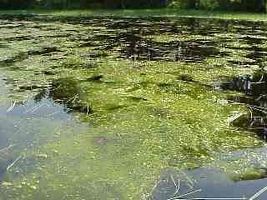 |
|
|
|
EvergladesHUB Home > Nature & Man > MERCURY |
Concern | Toxicology | Everglades | Hg-Control |
|
|
| Why are we so concerned about mercury in the environment ? | ||||
|
|
|

Elevated sulfur-compound levels in stagnant water bodies promote MeHg synthesis through bacterial action. From this level, Hg bioaccumulates in higher and higher organisms throughout the food chain. | ||
| Methylmercury | Sulfur and Mercury | Sulfur in Fertlizers | ||
| MERCURY and METHYL-MERCURY in the Everglades | ||||
|
|
| |||
| MERCURY CONTROL | ||||
 |
Obviously, due to the globe-wide releases of mercury and its deposition from the atmosphere, the control of mercury very much depends on locally controling mainly the sulfur compounds in sensitive (aqueous) environments such as Florida Everglades where fishing represents a large and ubiquitous activity. Follow up on: "The 3rd Workshop on Mercury and Sulfur in So-Florida Wetlands" (June 21-22, 2011 at SFWMD, West Palm Beach, FL). |
| ||
| Some Press and Media about Mercury in the Everglades | |||
| Methylmercury an environmental and health issue, Rivers Coalition told | TCPalm | July 28, 2011 | |
| Protecting our children from prophets (and profits) of doubt | Environmental Health News | July 19, 2011 | |
| Of Fetuses and the Everglades | Counterpunch.org | July 6, 2011 | |
| Fear-mongering about mercury in Everglades is unfair slam of farmers | TC Palm | June 10, 2011 | |
Sulfate in the Everglades: Whose problem is it, and what should be done ? |
Florida Independent | May 20, 2011 | |
| Mercury traces study shows strange results: Nowak | Leavenworth Times | December 16, 2010 | |
| Mercury makes ibises gay | Miami Herald | December 2, 2010 | |
| ©
2009-2014, Boya Volesky E-mail: evergladeshub@gmail.com |
|
|



